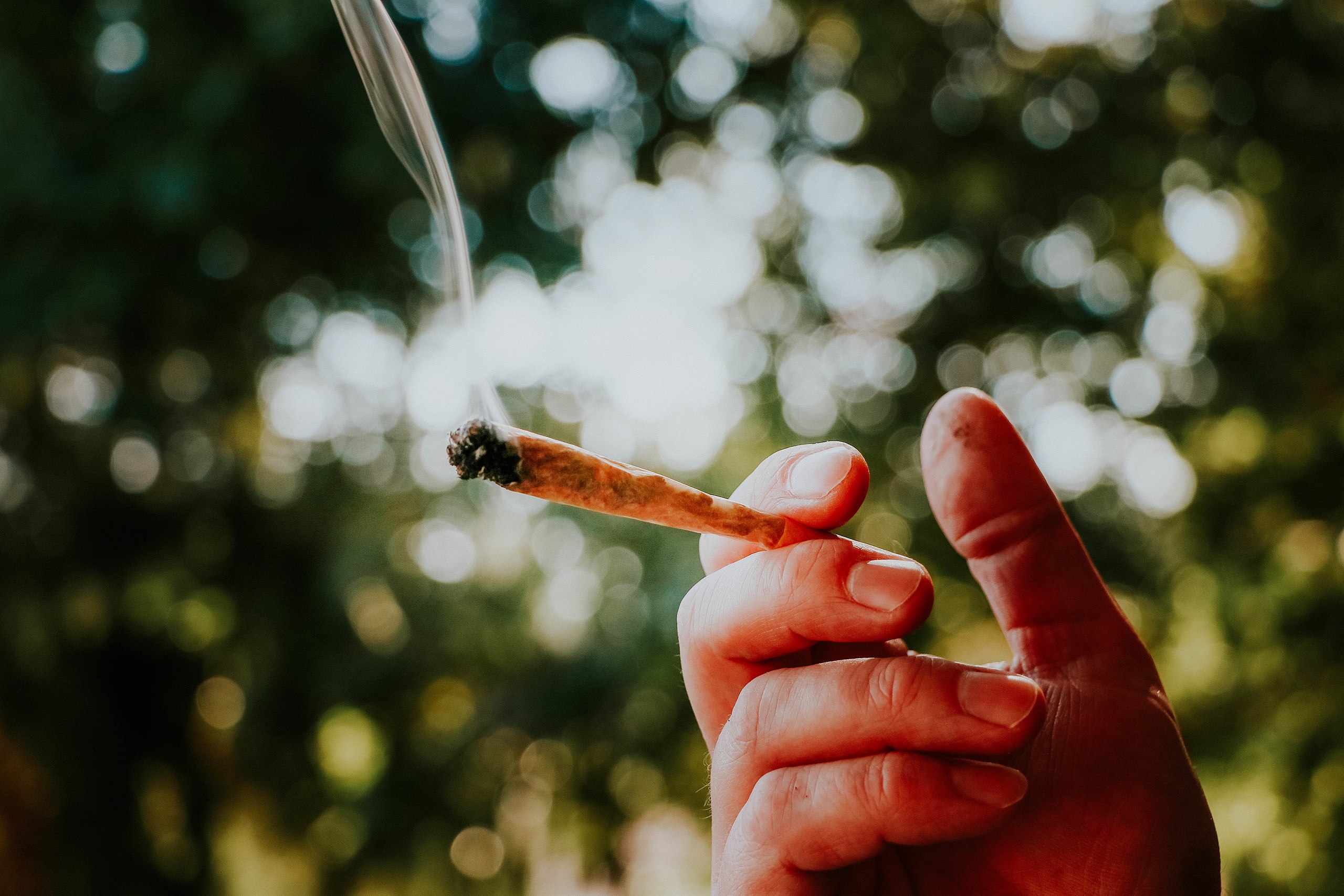Legalization has brought along with it an increase in marijuana use among adults in Canada, the U.S. West Coast, and other American states among the 33 that have legalized some kind of cannabis consumption. Accompanying this increase in interest and use has come greater scrutiny among public health advocates and researchers of the drug’s potential benefits, and its downsides.
◊
The past five years has marked a significant, rapid evolution of cultural attitudes toward marijuana among North Americans. Along with growing moves toward legalization and law liberalization in Canada, Mexico, and parts of the United States, particularly along the West Coast, opinions are becoming more liberal and tolerant as well.
Along with changes in the law and public perception has come additional scrutiny. Research into cannabis, and into cannabis culture, has uncovered insights as well as concerns for public health and safety. For example, are there underreported effects of cannabis consumption now coming to light? And what else is changing culturally, particularly in the U.S., where now more than half of all states have taken steps either to decriminalize or legalize the possession and use of marijuana. What do we now know, and what facts are left to harvest?
It turns out there’s a lot to learn. And research has been spotty at best since the Nixon Administration, which, in 1970, reclassified marijuana as a Schedule I drug with no medicinal value. After that decision, which shut down ongoing research of that era, there’s been a lack of methodical study into recreational drugs generally and marijuana specifically. And research has been slow to get ramped up again. As a result, there is a paucity of tested results. Though some research into drug effects and efficacy has been going on, the results lack – in the words of researchers – “maturity.” Results need to be reviewed and retested in order for data to “ripen.”
There’s been plenty of interest in discovering more about potential advantages of consuming pot, as well as its drawbacks. Changes in the U.S. and Canada following pot legalization have led to increased scrutiny of its effects. And despite the history of government interference with research, some noteworthy work is going on.
Pot Use in the U.S. and Canada: What We Know
As noted in The American Prospect, change on both cultural and scientific levels is inevitable; author Adam Serwer says, “Our views of marijuana and who consumes it have already changed.” It’s been established and confirmed by both government and independent experts that cannabis consumption increases every year among adults. As more people sample the drug, for recreational or medical uses, cannabis use is becoming normalized, even in areas where the drug is still banned.
And who are marijuana smokers? Well, it turns out that typical users hew very closely to the average American. According to research carried out for the National Organization for the Repeal of Marijuana Laws (NORML) in 2016, American pot users are generally employed (74 percent), homeowners (66 percent), college grads (52 percent), and married (78 percent!). So much for the stereotype that pot smokers are young unemployed slackers; most self-defined users are both middle-class and middle-of-the-road.

Source: elsaolofsson, via Wikimedia Commons
Other research shows that cannabis consumers are more male than female, more Caucasian than of other racial backgrounds, and more urban and suburban than rural. Perhaps not surprisingly, they also tend to be moderate to liberal (or libertarian) in their social and political views.
Do pot smokers vote? Recent demographic data indicate that they’re less likely to vote in elections than non-users. Despite being somewhat more active and social than their non-pot-smoking peers, they appear to be less motivated to actually express their views at the polls.
Forbes magazine reported on a survey of Californians specifically, where change has been rapid and relatively abrupt. Following legalization of recreational marijuana in 2016 (“compassionate use” of medical marijuana was approved in 1996), self-reporting regular users increased from 23 percent of the adult population in 2017 to 29 percent in 2018.
In addition, acceptance among non-users also increased in this time period. “Rejecters,” i.e., those who report they would never use (or “never again use”) cannabis, have declined somewhat, from 40 percent of the adult population to 38 percent. Interestingly, though, even a majority of rejecters say they would approve compassionate use for a loved one, despite their personal decision against its use.
Marijuana Demographics: What We Know, What We Don’t
Forbes also reports that the average age of users is 39, and the average age of rejecters is 56. But maybe that information needs updating. The New York Times reports that the fastest growing segment of new users is people 50 years old and above. The market share of these older consumers grew 25 percent from 2017 to 2018. And Forbes agrees: Use among the older demographic “is rising even faster than younger demographics.”
How about the youngsters? Certainly, some would say that pot is a kid’s high, and use tapers off once they become adults. Well, the Centers for Disease Control has done a review of data from 2000 through 2014, and the results are a bit surprising, even encouraging.
Forbes found that users self-describe as Republicans (45 percent) nearly as much as Democrats (48 percent). That’s a lot of Republicans out there smoking weed. Evidently the conservative-libertarian crowd likes to chill!
Evidently, the grown-ups aren’t sharing their weed with the young folks: Although an estimated additional 2.5 million people of all ages (12 years of age and up) begin smoking pot each year, there’s been no increase in use among those aged 12 to 17. It’s only among ages 18 and up that growth in consumption has been recorded.
The Good, and the Bad, of Cannabis Use
Now, that was a lot of data to digest. Still, there is much more to learn, especially in the areas of health and safety. Seeking medical reports about the use and purported benefits of marijuana, I found a groundbreaking report by the National Academies of Sciences, Engineering, and Medicine that highlights numerous dangers associated with marijuana consumption. The first, and most understandable, is that marijuana smokers (and vapers) risk a variety of respiratory infections, from the potential for “smoker’s cough” and an increased risk of bronchitis, to other respiratory problems, including asthma and COPD.
Other risks they noted include:
- Schizophrenia and psychosis (generally from high-dosage consumption)
- Car crashes
- “Life achievement” (which seems somewhat arbitrary)
- Prenatal health (noted as presumed but not currently shown by data)
Want some good news from the study? Marijuana does not seem to be linked to cancers, as is tobacco consumption. And marijuana has been shown to be generally less harmful than two of the most dangerous addictive substances in our society, cigarettes and alcohol.
There is now a clinical term for those whose cannabis use is chronic or presents obstacles to leading a fully functional life. The habitual or dependent use of weed is now diagnosed as cannabis use disorder.
Beyond these significant and noteworthy apparent risks, there are also numerous benefits that are associated with pot consumption. Cannabis has been shown to offer relief to those with chronic pain, multiple sclerosis, and chemotherapy-induced nausea and vomiting. There is also encouraging news to report from testing on treatment of epilepsy and irritable bowel syndrome (IBS).
Since we have data that supports the idea that cannabis users in the U.S. are generally otherwise law-abiding, legalization should tend to reduce both incarceration and the involvement of violent drug cartels in the marijuana black market.
Other research is more controversial. For example, some experts in harm reduction suggest that persons with alcoholism and opiate addiction could safely trade in their harmful substance abuse for the less toxic effects of marijuana use. Additionally, researchers studying depression and PTSD hold out hope for symptom relief, if not a cure, from pot; but outcomes are split between proponents and opponents of marijuana as an effective treatment for social anxiety.
Easing into It: Benefits and Risks of Pot Use
Despite the indications described above, not enough research has been done to show conclusive links between cannabis and these medical and psychological conditions. But dependency is still a problem. The New England Journal of Medicine published research several years ago that estimated that 12 percent of the population consume marijuana in some form, and that 9 percent of that group (or approximately 1.08 percent of the population as a whole) exhibit some symptoms of cannabis dependence or addiction. Fully half of those who reported daily use in the study showed signs of pot dependency.
I felt I was being pulled in two directions. Marijuana has benefits, proclaim some; but beware the risks of asthma and addiction, say others. Then I uncovered a surprising and definitely underreported possible effect of marijuana on adult males: the purported relationship between pot use and erectile dysfunction (ED), covered in a 2018 article in the online newsletter Medical News Today titled “Does Marijuana Cause Erectile Dysfunction?”
Male tobacco smokers, it said, experience a higher-than-average risk of ED, since smoking restricts blood flow to the veins and arteries. But is the same true for pot smokers? In fact, the article makes clear that there’s no conclusive evidence that cannabis leads directly to ED.
However . . .
The Medical News Today article also makes clear that some of the well-known and observed effects of marijuana consumption may have more than a passing connection to, let’s say, diminished performance in the clinch. These, which you may already know, include euphoria, drowsiness, and slowed reaction times.
The article has a very helpful couple of suggestions for men whose concern may have been piqued by this topic. If you’re concerned about ED, the article suggests, get more exercise – and especially avoid tobacco and alcohol.
Cannabis and Culture: Still So Much More to Learn
What are we to make of this patchwork of “unripe” data mixed with common sense concerns and a little bit of hysteria? Perhaps a calm and balanced approach is the best path. Moderation seems to be key to enjoying what life has to offer without succumbing to the extremes of either dependence or avoidance. Consider what you’ve learned, think of consequences, and choose the path that works best for you.
It’s definitely too early to close the books on marijuana research; in fact, it barely seems to have started. It seems that the main thing we’ve learned is that there’s so much more to learn.
Ω
Kevin Martin is Senior Writer for MagellanTV. He writes on a wide variety of topics, including outer space, the fine arts, and modern history. He has had a long career as a journalist and communications specialist with both nonprofit and for-profit organizations. He resides in Glendale, California.
Title image: Ganja Smoking at Gangasagar Fair Transit Camp, Kolkata by Biswarup Ganguly via Wikimedia Commons.

